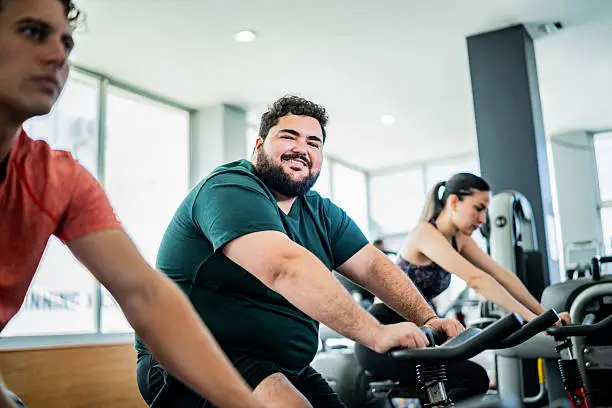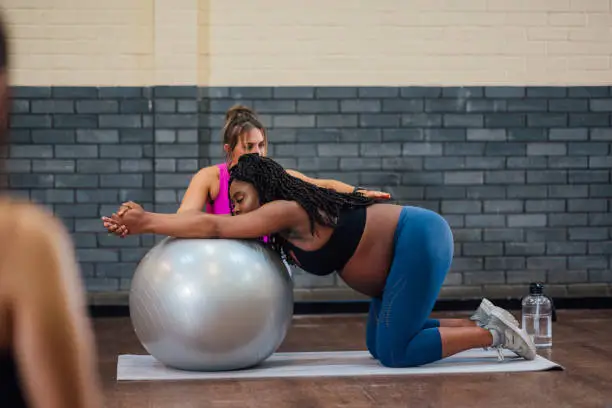🌟 Introduction
Starting a fitness journey can feel overwhelming — especially if you’re overweight or haven’t worked out in a while.
But guess what? You don’t have to be fit to start. You just have to start to get fit.
This guide isn’t about pushing you to run marathons or lift heavy weights on day one. It’s about helping you build healthy habits that fit your body, your life, and your pace. Let’s dive in.
🎯 Understanding Your Why
What’s Your Motivation?
Before lacing up your shoes, ask yourself: Why do I want to get fit?
- To feel more energized?
- Play with your kids without getting winded?
- Reduce pain or blood pressure?
Knowing your “why” keeps you going when motivation fades.
Long-Term Goals vs Short-Term Wins
Set both:
- Long-term: Lose 30 lbs, run a 5K, lower cholesterol.
- Short-term: Walk 3x a week, drink more water, stretch daily.
🧠 Overcoming the Fear of Starting
Breaking Through Mental Barriers
Many beginners fear judgment. Here’s the truth: most people at the gym are focused on themselves. And those who notice you? They probably admire your effort.
Social Anxiety at the Gym
If gyms make you anxious:
- Start with home workouts or walking outside.
- Try beginner YouTube videos.
- Pick quiet gym hours if you go.
You’re not alone — lots of people feel this way at first.
❤️ Health First, Not Just Weight Loss
Measuring Progress Beyond the Scale
The scale doesn’t tell the full story. Celebrate these wins:
- Improved sleep
- More energy
- Better mood
- Less joint pain
The Importance of Mobility and Energy
Focus on moving better, not just smaller. Fitness = Function, not just aesthetics.
🏃 Choosing the Right Type of Exercise
Low-Impact, High-Benefit Workouts
Start with exercises that are gentle on joints but effective:
- Walking
- Chair exercises
- Water aerobics
- Stationary cycling
- Seated strength training
Activities You Actually Enjoy
If you hate running, don’t run. Try:
- Dance workouts
- Hiking
- Swimming
- Yoga
Enjoyment = consistency.
🐢 Start Slow, Go Steady
The Power of Walking
Walking is underrated. It:
- Burns calories
- Strengthens joints
- Improves heart health
- Requires zero equipment
Start with 10-15 minutes a day, then build up.
Consistency Beats Intensity
You don’t need to go hard. Just don’t quit.
🦻 Listen to Your Body
Understanding Good Pain vs Bad Pain
Some soreness is normal. Sharp, sudden pain isn’t. Know the difference.
- Good pain: Muscle fatigue, mild soreness
- Bad pain: Joint pain, sharp stabs, chest tightness
Rest Days Are Part of Progress
Your body builds strength during rest. Take 1–2 rest days weekly — your muscles will thank you.
🤗 Build a Support System
Friends, Family, or Online Communities
Surround yourself with people who cheer you on.
- Join fitness groups on Facebook
- Follow plus-size fitness influencers
- Share your goals with a friend
Finding a Workout Buddy
A workout partner helps you stay accountable and makes exercise more fun.
👟 Invest in Proper Gear
Comfortable Clothes and Supportive Shoes
Well-fitted, breathable clothing boosts confidence. Most importantly, get:
- Supportive, wide-toe sneakers
- Moisture-wicking tops
- Compression leggings (for comfort)
Workout Accessories That Make Life Easier
- Resistance bands
- Yoga mats
- Foam rollers
- Water bottles with time markings
🍽️ Fuel Your Body Properly
Pre- and Post-Workout Nutrition
Fuel = Energy. Eat something light before and after workouts:
- Before: banana, oats, yogurt
- After: protein shake, lean protein + carbs
Hydration Matters
Water helps your body function, burn fat, and prevent injury. Keep a water bottle handy all day.
📊 Track Your Progress (Beyond the Scale)
Non-Scale Victories
Track wins like:
- “I walked 20 minutes without stopping.”
- “I climbed stairs without gasping.”
- “My knees hurt less.”
Journaling and Fitness Apps
Apps like MyFitnessPal, Fitbit, or MapMyWalk help you log workouts, steps, and food.
Or just write in a notebook — progress is progress.
🎉 Celebrate Small Wins
Every Step Counts
Start celebrating every effort:
- First full workout? High five!
- Chose stairs over elevator? That’s a win.
- Woke up and stretched? Count it.
Reward Yourself — Without Food
Treat yourself to:
- A massage
- New workout gear
- A day off with a book
Motivation thrives on positive reinforcement.
🚫 Common Mistakes to Avoid
Doing Too Much Too Soon
Don’t push yourself too hard early on. That leads to:
- Injury
- Burnout
- Discouragement
Comparing Yourself to Others
Your journey is yours alone. Forget Instagram. Focus on you.
📅 Beginner Workout Plan (Sample)
3-Day Weekly Schedule
Day 1: Full Body Movement
- 10-min warm-up walk
- 3 rounds:
- 10 sit-to-stand from chair
- 10 wall push-ups
- 15-second plank (on knees)
Day 2: Active Recovery
- Light yoga or stretching
- Deep breathing and posture work
Day 3: Cardio + Core
- 15-minute walk
- Seated knee lifts (3×10)
- Arm circles (3×30 sec)
Repeat weekly, add time or reps gradually.
✅ Conclusion
Being overweight doesn’t mean you’re unfit — it just means your journey starts from a different point. And that’s perfectly okay.
You don’t need to be perfect. You don’t need fancy gear. You just need to take that first step — and then the next.
Every rep, every step, every glass of water counts. You’re stronger than you think. Let this be the beginning of a healthier, happier, and more confident you.
❓ FAQs
1. How many days a week should I work out as a beginner?
Start with 2–3 days a week, gradually building up. Rest is just as important as movement.
2. Can I lose weight just by walking?
Yes! Walking consistently, combined with a healthy diet, can absolutely lead to weight loss.
3. What if I have joint pain or mobility issues?
Try water exercises, chair workouts, or consult a physical therapist to modify exercises safely.
4. Should I focus more on diet or exercise?
Both matter, but start with whichever is easier to stick with. Often, small wins in one area lead to success in the other.
5. Is it normal to feel discouraged at first?
Totally. But remember: progress isn’t linear. Celebrate every effort, and keep going.



